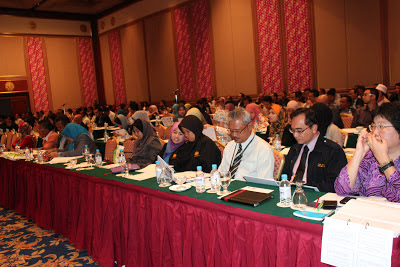I did some information gathering from presentations slides by the regulator and ministry which were shared through public events and I managed to summarize my findings and estimation of potential energy cost savings as the shown in the table above.
From 128 buildings, the total electricity bills is approximately RM630 millions per year and the total is about RM2.7 billions per year. With a very conservative target at about 10% savings per year, the government would be able to save electricity cost at RM63 millions and RM270 millions respectively. Based on many case studies, the 10% could be achieved through low-no cost measures and by the implementation of energy management system the organization.
Refrofitting projects to save energy costs for existing buildings by the government could be very costly and this is where the private sector could take part by investing and get paid from the actual cost savings achieved through Energy Performance Contracting(EPC) model.
From the above numbers, we also would understand why some parties questioned the potential savings from LED lighting at government buildings at RM800 millions per year as announced by the YB Minister at one of his press conferences recently. It look like the whole lamps has to be switched off to get that amount of expected savings and based on this gathered data and estimated potentials, we can say that it is impossible. Surely , the minister is unhappy since I believe his statement was based on advice and information forwarded to him from his ministry.
Now , we go back to the main point here. There are potentials for energy savings in government's building facilities and the platform should be provided for interested parties like ESCOs to play their roles.
Below are some key points, recommendations and proposed support measures to the government to enable EPC to work at government buildings as I presented at the Seminar on Energy Efficiency Initiatives for Government Buildings , 19 December 2012, PWTC Kuala Lumpur.
Recommendations
q To create a special revolving fund for EPC Projects with lower interest rates – to kick-off and develop the EPC market
q Development of in-house capacity in technical & financial evaluation of EE&EC Projects for
q Authorized agency
q financial institutions
q Development and acceptance of standard technical evaluation, monitoring and performance verification criteria for EE&EC Projects
q With by technical experts from recognized professional/industry bodies/ associations
q Development of and acceptance of standard evaluation for funding and risk assessment criteria for EE&EC Projects
q Sharing of experiences in successful investments in EPC projects through seminars/dialogues
• (results, payback period) from people in business community who have experienced it
• Criteria of viable EE projects
• Competency of ESCOs
The Conclusion
q EPC
ü The
potentials in Malaysia is still relatively “UNTAPPED”
ü Interested
parties must have the same understanding & goals on how to make EPC works
ü ESCOs must
have/develop competency &
capability to ensure successful EPC
projects implementation
ü More
successful EPC projects are required to attract more attention of building
owners & banks/investors
 |
| Presenting on EPC process |
 |
| The audience: From biggest electricity users of government buildings |
To summarize the impacts of EPC, I have outlined it at the end of my presentation in the slide below.



No comments:
Post a Comment